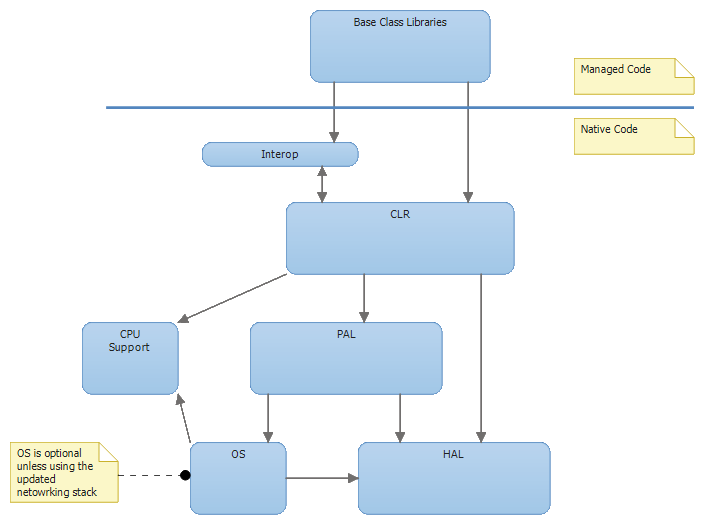News from the camp of the .NET Micro Framework
 Windows 10 is developing rapidly and covers more and more platforms. However, there is a niche where even the Windows 10 IoT version will not be able to go: microcontrollers. But even here progress does not stand still. A week ago a very interesting, but little-lit event happened: a new version of the .NET Micro Framework 4.4 was released. Than this event is so significant, I will tell further.
Windows 10 is developing rapidly and covers more and more platforms. However, there is a niche where even the Windows 10 IoT version will not be able to go: microcontrollers. But even here progress does not stand still. A week ago a very interesting, but little-lit event happened: a new version of the .NET Micro Framework 4.4 was released. Than this event is so significant, I will tell further.The .NET Micro Framework is a port of the well-known .NET under microcontrollers. The main goal of this platform is to use the power, simplicity and convenience of the .NET technology on systems with limited memory and computing resources. The project appeared in 2001 and was originally commercial. As it developed, in 2008 it became an open source open source platform supported by Microsoft. Well, nowadays, with the growing popularity of IoT, he gained a second wind.
Now the .NET Micro Framework has moved to GitHub and has gained many followers. There are two branches of the project development: netmf-interpreter and LLILUM.
')
netmf-interpreter
This “classic” branch continues the development of the first ideas of the .NET Micro Framework. For each specific hardware platform, a port must be written that implements the work in “iron”. The architecture of this solution looks like this:

Each layer from bottom to top all the less depends on the specific microcontroller. This allows you at the very top to enjoy all the benefits of managed development code in Visual Studio.
The biggest disadvantage of this approach is porting complexity. Creating ports requires serious skills and a lot of time, which repels many developers.
Lilum
These new direction, built on other principles of work. Here compilation takes center stage. The code is first compiled into Microsoft Intermediate Language (MSIL, predecessor to CLI), and then to Intermediate representation (IR). The IR code undergoes significant optimization and it already generates the machine code. This is essentially a slightly modified LLVM .
This approach allows to obtain a significant increase in performance and memory savings. Compilation is now supported for ARMv4 and ARMv5 command sets ( ISA ) but without using LLVM. The current version can work with the Cortex-M command set, but using LLVM.
True, I must say that this branch is still damp. LLILUM is actively developing, but there is still not enough.
.NET Micro Framework 4.4
So what is so remarkable about the .NET Micro Framework 4.4? In this version, in addition to many improvements and fixes, first appeared, though not complete, but support for UWP - the universal Microsoft platform. Now the .NET Micro Framework is part of a single space and becomes abreast with various versions of Windows 10.
UWP support in LLILUM will evolve and expand. In January 2016, the developers promise a beta version. This means that in the near future it will be possible to use the same code not only on devices with Windows 10, but also on Cortex-M microcontrollers. Thus, even those devices on which Windows 10 IoT cannot be installed will be covered.
More information about the .NET Micro Framework can be found by reading the article “Introducing the .Net Micro Framework” on Habré and looking at the reports on the “.Net Micro Framework” Architecture and “Overview of .Net Micro Framework” on techdays.
Update :
An article about the launch of the “Hello World” application on the emulator can be found here .
Source: https://habr.com/ru/post/120891/
All Articles